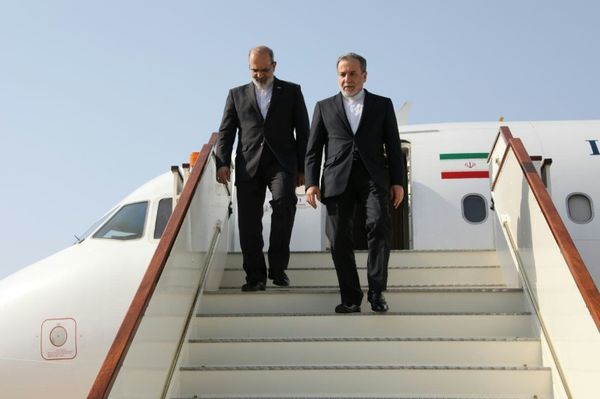2001: A Space Odyssey is a landmark film in the history of cinema. It is a work of extraordinary imagination that has transcended film history to become something of a cultural marker. And since 1968, it has penetrated the psyche of not only other filmmakers but society in general.
It is not an exaggeration to say that 2001 single-handedly reinvented the science fiction genre. The visuals, music and themes of 2001 left an inedible mark on subsequent science fiction that is still evident today.
When Stanley Kubrick began work on 2001 in the mid-1960s, he was told by studio executive Lew Wasserman: “Kid, you don’t spend over a million dollars on science fiction movies. You just don’t do that.”
By that point, the golden age of science fiction film had run its course. During its heyday, there was a considerable variety of content within the overarching genre. There had been serious attempts to foretell space travel. Destination Moon, directed by Irving Pichel and produced by George Pal in 1950, and, in mid-century, Byron Haskin’s Conquest of Space both fantasised space travel and, in Haskin’s film, a space station, which Kubrick would elaborate on in 2001.
Most 1950s science fiction films, though, were cheap B-movie fare and looked it. They involved alien invasions with an ideological and allegorical subtext. They were cultural, cinematic imaginations of the danger of communism, which in the overheated political atmosphere of the time was seen as an imminent threat to the American way of life.
The aliens in most science fiction films were out simply to destroy or take over humanity; they were expressions, to use the title of a Susan Sontag essay, of “the imagination of disaster”. There were some exceptions, including Byron Haskin’s film version of The War of the Worlds and Robert Wise’s The Day the Earth Stood Still.
By 1968, then, as the lights went down, very few people knew what was about to transpire and they certainly were not prepared for what did. The film opened in near darkness as the strains of Thus Spake Zarathustra by Richard Strauss were heard. The cinema was dazzled into light, as if Kubrick had remade Genesis.
The subsequent 160 or so minutes (the length of his original cut before he edited 19 minutes out of it) took the viewer on what was marketed as “the ultimate trip”. Kubrick had excised almost every element of explanation leaving an elusive, ambiguous and thoroughly unclear film. His decisions contributed to long silent scenes, offered without elucidation. It contributed to the film’s almost immediate critical failure but its ultimate success. It was practically a silent movie.
2001 was an experiment in film form and content. It exploded the conventional narrative form, restructuring the conventions of the three-act drama. The narrative was linear, but radically, spanning aeons and ending in a timeless realm, all without a conventional movie score. Kubrick used 19th-century and modernist music, such as Strauss, György Ligeti and Aram Khachaturian.
Vietnam
The movie was made during a tumultuous period of American history, which it seemingly ignored. The war in Vietnam was already a highly divisive issue and was spiralling into a crisis. The Tet offensive, which began on January 31 1968, had claimed tens of thousands of lives. As US involvement in Vietnam escalated, domestic unrest and violence at home intensified.
Increasingly, young Americans expected their artists to address the chaos that roared around them. But in exploring the origins of humanity’s propensity for violence and its future destiny, 2001 dealt with the big questions and ones that were burning at the time of its release. They fuelled what Variety magazine called the “coffee cup debate” over “what the film means”, which is still ongoing today.
The design of the film has touched many other films. Silent Running by Douglas Trumbull (who worked on 2001’s special effects) owes the most obvious debt but Star Wars would be also unthinkable without it. Popular culture is full of imagery from the film. The music Kubrick used in the film, especially Strauss’s The Blue Danube, is now considered “space music”.
Images from the movie have appeared in iPhone adverts, in The Simpsons and even the trailer for the new Barbie movie.
The warnings of the danger of technology embodied in the film’s murderous supercomputer HAL-9000 can be felt in the “tech noir” films of the late 1970s and 1980s, such as Westworld, Alien, Blade Runner and Terminator.
HAL’s single red eye can be seen in the children’s series, Q Pootle 5, and Pixar’s animated feature, Wall-E. HAL has become shorthand for the untrammelled march of artificial intelligence (AI).
In the age of ChatGPT and other AI, the metaphor of Kubrick’s computer is frequently evoked. But why when there have been so many other images such as Frankenstein, Prometheus, terminators and other murderous cyborgs? Because there is something so uncanny and human about HAL who was deliberately designed to be more empathic and human than the people in the film.
In making 2001, Stanley Kubrick created a cultural phenomenon that continues to speak to us eloquently today.
Nathan Abrams receives funding from charities and research councils.
This article was originally published on The Conversation. Read the original article.







